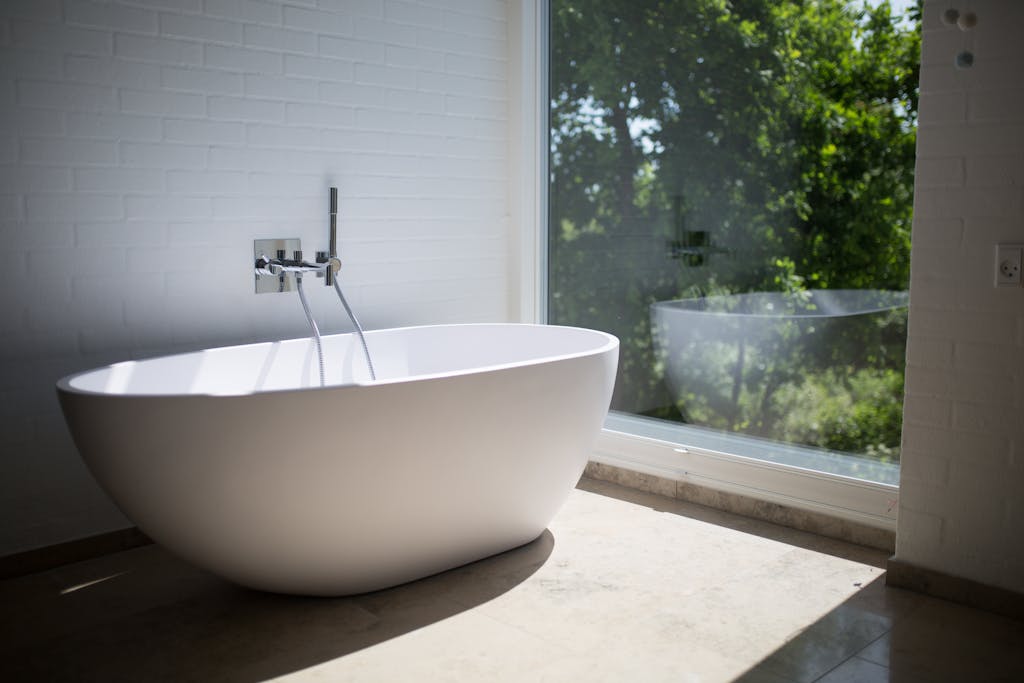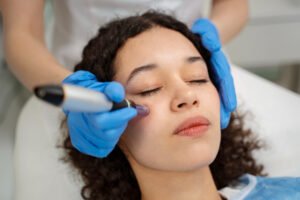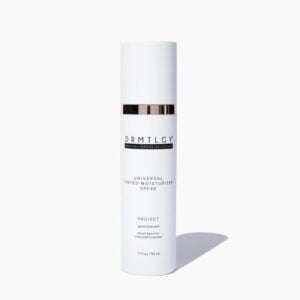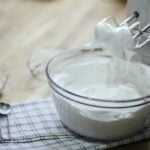FREE SHIPPING OVER $50
DIY Beauty: How to Create a Skincare Routine
Who doesn’t love a good skincare routine? Taking care of your skin can make you feel good, boost your confidence, and help you put your best face forward. However, many people believe that taking care of their skin is too expensive. The truth is, it doesn’t have to be. With a little knowledge and some strategic shopping, you can create a DIY beauty routine that works for your skin and your wallet.
In this article, we will explore the benefits of a DIY skincare routine, the essential steps you need to include, and some simple tips for creating your own personalized routine. We’ll cover everything from cleansers to moisturizers and provide tips on how to save money along the way. So let’s get started.
The Benefits of a DIY Beauty Routine

- Saves Money: Many DIY beauty recipes use natural ingredients that may already be available in your home. Ingredients like coconut oil, honey, and avocado can be used in a variety of beauty recipes, and are often less expensive than buying commercial products that contain these same ingredients. By using these ingredients to make your beauty routines you can save money compared to buying an expensive product.
- Control What Goes on/into Your Skin: Making your own DIY beauty routine can give you greater control over what goes on and into your skin. It allows you to choose natural, non-toxic ingredients that are tailored to your skin type and concerns, and avoid potentially harmful chemicals found in commercial products.
- Customized to Your Needs: DIY beauty routines are customizable to fit your specific needs and preferences. They could be used to target specific skin issues like hyperpigmentation or acne and can also be tailored to your skin type.
Essential Steps in a DIY Beauty Routine
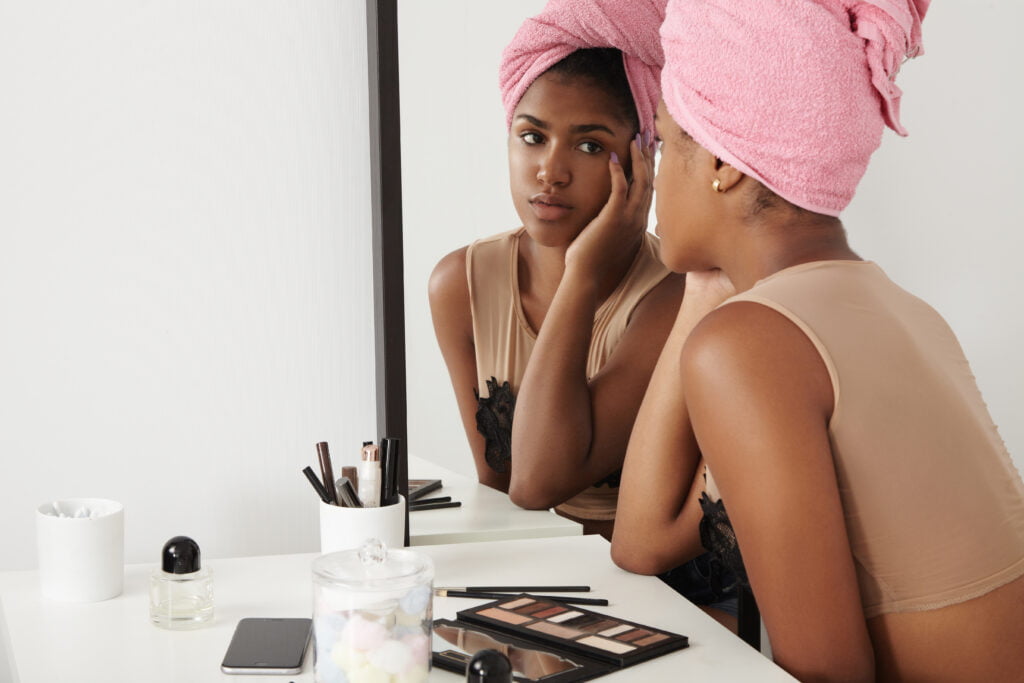
Step 1: Determine Your Skin Type
Before you can create a skincare routine, you need to know your skin type. There are four basic skin types namely: oily, dry, combination, and sensitive. Once you know your skin type, you can choose products that are formulated to work with it.
Step 2: Cleanse
Cleansing is the first step in any skincare routine. It removes dirt, oil, and makeup from your skin, leaving it clean and refreshed. Look for a cleanser that’s formulated for your skin type. If you have oily skin, choose a foaming cleanser that removes excess oil. If you have dry skin, choose a creamy cleanser that moisturizes while it cleanses. Honey, aloe vera, coconut oil and cucumber are natural ingredients that can be used as cleansers.
Step 3: Exfoliate
Exfoliating helps remove dead skin cells and reveals fresh, healthy skin. However, you don’t need to exfoliate every day. Once or twice a week is enough for most people. Look for a gentle exfoliator that won’t irritate your skin. Coffee grounds, papaya and oat meal are some ingredients that can be used to exfoliate the skin.
Step 4: Tone
Toning helps balance your skin’s pH and prepares it for the next step in your skincare routine. Look for a toner that’s formulated for your skin type. If you have oily skin, choose a toner that helps control oil production. If you have dry skin, choose a toner that adds moisture. Apple cidar vinegar, aloe vera, green tea and chamomile are ingredients that can be used as toners.
Step 5: Treat
This step is where you can customize your skincare routine based on your skin concerns. If you have acne-prone skin, use a spot treatment that contains salicylic acid or benzoyl peroxide. If you have dark spots or hyperpigmentation, use a serum that contains vitamin C or niacinamide. If you have fine lines and wrinkles, use a retinol cream.
Step 6: Moisturize
Moisturizing is essential for all skin types. Look for a moisturizer that’s formulated for your skin type. If you have oily skin, choose a lightweight, oil-free moisturizer. If you have dry skin, choose a rich, hydrating moisturizer.
Step 7: Protect
The final step in any skincare routine is to protect your skin from the sun. Use a broad-spectrum sunscreen with an SPF of at least 30. Apply it every day, even on cloudy days.
Common DIY Skincare Mistakes to Avoid

- Using lemon juice: Lemon juice is a popular DIY skincare ingredient, but it can be very harsh on the skin. It can cause irritation, dryness, and even sun sensitivity. It’s best to avoid using lemon juice on your skin.
- Using baking soda: Baking soda is another popular DIY skincare ingredient, but it can also be very harsh on the skin. It has a high pH, which can disrupt the skin’s natural pH balance and cause irritation. It’s best to avoid using baking soda on your skin.
- Not patch testing: When trying out a new DIY skincare ingredient or recipe, it’s important to patch test it first. Apply a small amount of the product to your inner wrist or behind your ear and wait 24 hours to see if you have any adverse reactions.
- Over-exfoliating: Exfoliating is important for removing dead skin cells and revealing brighter, smoother skin. However, over-exfoliating can cause irritation, redness, and even breakouts. Limit exfoliating to 2-3 times per week.
- Mixing too many ingredients: It’s tempting to mix a bunch of different ingredients together to create a “super” skincare product, but this can actually do more harm than good. Different ingredients can have different pH levels, which can cancel out each other’s benefits or cause irritation.
- Skipping sunscreen: Sunscreen is one of the most important skincare products you can use. It protects your skin from harmful UV rays that can cause premature aging, sunburn, and even skin cancer. Make sure to wear sunscreen every day, even on cloudy days.
- Using essential oils improperly: Essential oils can be beneficial for the skin, but they are very potent and can cause irritation if used improperly. Always dilute essential oils in a carrier oil before applying them to the skin.
- Not sanitizing tools: When creating DIY skincare products, make sure to sanitize your tools and containers. Bacteria can easily grow in dirty containers or on dirty tools, which can cause skin irritation or infections.
FAQs
Q: What are the Best DIY Skincare Ingredients?
A: Some of the best DIY skincare ingredients include honey, aloe vera, avocado, coconut oil, and green tea.
Q: Can I Use DIY Skincare Products on Sensitive Skin?
A: It’s important to be cautious when using DIY skincare products on sensitive skin, as some ingredients may cause irritation. Always patch test new products and start with a small amount.
Q: How Often Should I Exfoliate?
A: Most people can benefit from exfoliating 1-2 times a week. However, if you have sensitive skin, you may need to reduce the frequency to once a week or less.
Q: Is it Safe to Make Your Own Sunscreen?
A: While it is possible to make your own sunscreen, it is important to note that commercial sunscreens are rigorously tested for safety and effectiveness. Making your own sunscreen can be risky, as you may not be able to achieve the same level of protection as commercial products.
Q: Can DIY Skincare Replace Professional Treatments?
A: While DIY skincare can be effective for maintaining healthy skin, it may not be able to replace professional treatments for more serious skin concerns. If you have a skin condition or are experiencing persistent skin issues, it is important to consult with a dermatologist.
Conclusion
Creating a DIY skincare routine can be a fun and affordable way to achieve healthy, glowing skin. By following the essential steps of cleansing, exfoliating, toning, moisturizing, and sun protection, you can create a personalized routine that works for your unique skin type and concerns.
Remember to start simple and avoid common mistakes, such as using harsh ingredients and over-exfoliating. With a little bit of research and consistency, you can achieve the beautiful, healthy skin you’ve always wanted. So why not give it a try and create your own DIY beauty skincare routine today?
Don’t forget to check out our links and if you liked this blog post be sure to check out our other one on “Skincare ingredients that trigger skin irritation”.

